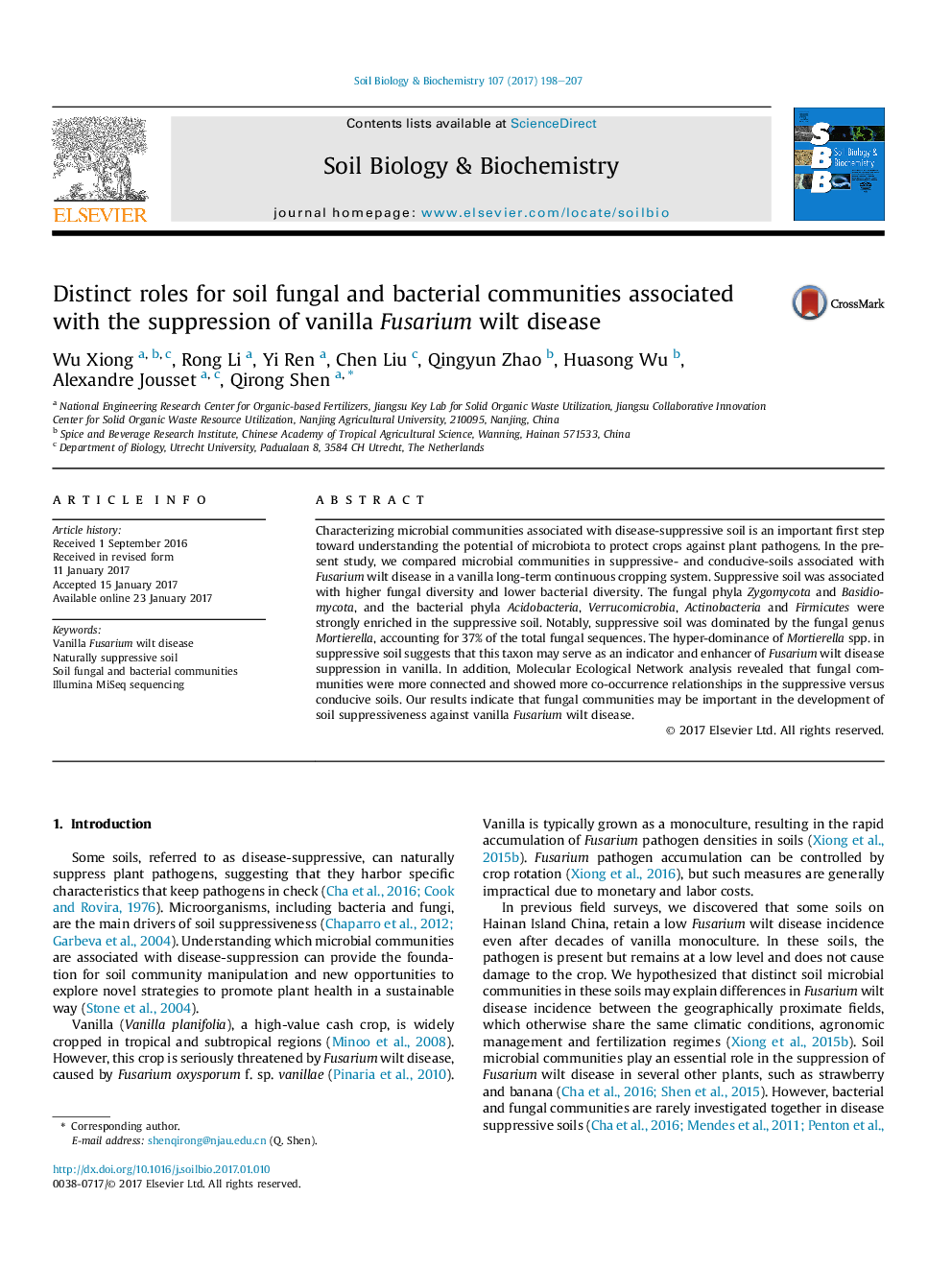| Article ID | Journal | Published Year | Pages | File Type |
|---|---|---|---|---|
| 5516430 | Soil Biology and Biochemistry | 2017 | 10 Pages |
â¢Naturally suppressive soil related to vanilla Fusarium wilt disease was identified.â¢Suppressive soil was associated with higher fungal diversity.â¢Suppressive soil was dominated by the fungal genus Mortierella.â¢Fungal communities showed more co-occurrence relationships in suppressive soil.
Characterizing microbial communities associated with disease-suppressive soil is an important first step toward understanding the potential of microbiota to protect crops against plant pathogens. In the present study, we compared microbial communities in suppressive- and conducive-soils associated with Fusarium wilt disease in a vanilla long-term continuous cropping system. Suppressive soil was associated with higher fungal diversity and lower bacterial diversity. The fungal phyla Zygomycota and Basidiomycota, and the bacterial phyla Acidobacteria, Verrucomicrobia, Actinobacteria and Firmicutes were strongly enriched in the suppressive soil. Notably, suppressive soil was dominated by the fungal genus Mortierella, accounting for 37% of the total fungal sequences. The hyper-dominance of Mortierella spp. in suppressive soil suggests that this taxon may serve as an indicator and enhancer of Fusarium wilt disease suppression in vanilla. In addition, Molecular Ecological Network analysis revealed that fungal communities were more connected and showed more co-occurrence relationships in the suppressive versus conducive soils. Our results indicate that fungal communities may be important in the development of soil suppressiveness against vanilla Fusarium wilt disease.
